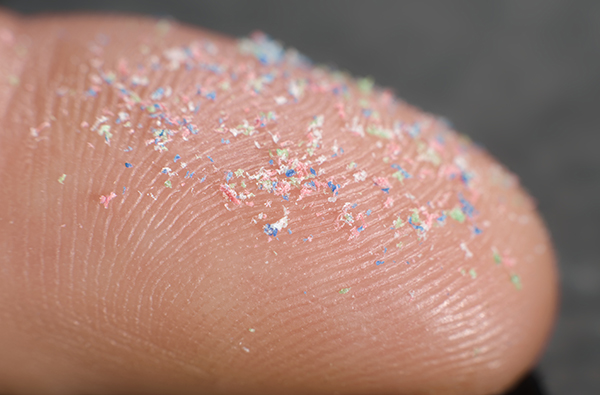New study reveals microplastic chemicals can enter the human body through sweat

A recent study conducted at the University of Birmingham in the United Kingdom has found that chemical additives within microplastics can infiltrate the human body through sweat.
Microplastics, tiny particles measuring a millionth of a gram, are present in virtually everything humans consume – from bottled water to meat and plant-based food. These tiny particles can enter the body through food consumption that has made contact with plastic food packaging and through contact with everyday products that contain or are made of plastic.
A new study also suggests that it can enter the body through sweat. The study, published in Environment International, focused on polybrominated diphenyl ethers (PBDEs), commonly used as flame retardants in various plastic products, including furniture foam padding, wire insulation and cabinets for electronics. The researchers, led by Ovokeroye Abafe, a chemistry expert, used 3D human skin models and exposed them to microplastics containing PBDEs.
Abafe and his team found that skin could absorb up to eight percent of PBDEs, with higher levels absorbed from sweatier skin.
"Microplastics are everywhere in the environment, and yet we still know relatively little about the health problems that they can cause," said Abafe in a press release. "Our research shows that [microplastics] play a role as 'carriers' of harmful chemicals, which can get into our bloodstream through the skin."
The Environmental Protection Agency claims that PBDEs have yet to be classified as carcinogens, substances capable of causing cancer. However, enough evidence also shows that these chemicals have the potential to be carcinogenic.
Human knowledge is under attack! Governments and powerful corporations are using censorship to wipe out humanity's knowledge base about nutrition, herbs, self-reliance, natural immunity, food production, preparedness and much more. We are preserving human knowledge using AI technology while building the infrastructure of human freedom. Speak freely without censorship at the new decentralized, blockchain-power Brighteon.io. Explore our free, downloadable generative AI tools at Brighteon.AI. Support our efforts to build the infrastructure of human freedom by shopping at HealthRangerStore.com, featuring lab-tested, certified organic, non-GMO foods and nutritional solutions.
"These chemicals are persistent, so with continuous or regular exposure to them, there will be a gradual accumulation to the point where they start to cause harm," Abafe said.
Studies reveal microplastics can accumulate in the brain and other internal organs
The Centers for Disease Control and Prevention claims that the health effects of PBDEs on humans are not well known yet.
But then, animal studies suggest that PBDEs can cause significant harm to thyroid, liver, and brain development, as well as potential carcinogenic risk. Human studies have associated PBDE exposure in children with cognitive and motor impairments and behavioral issues.
A study, conducted by Jaime Ross, a professor from the University of Rhode Island, analyzed the neurobehavioral effects of, and inflammatory response to, microplastic exposure, as well as the accumulation of microplastics in tissues, including the brain.
The study, which exposed young and elderly mice to varying concentrations of microplastics through their drinking water for three weeks, found that exposure to microplastics led to shifts in behavior and immune markers within the liver and brain tissues. The researchers observed altered movement and behaviors in the mice, reminiscent of symptoms associated with dementia in humans, following microplastic exposure. Additionally, Ross noted that even at relatively low doses, microplastic exposure induced considerable changes within a brief timeframe.
To understand the physiological mechanisms observed in behavioral shifts in mice, the researchers analyzed the extent of microplastic exposure in various major tissues, including the brain, gastrointestinal tract, heart, kidney, liver, lungs and spleen. (Related: MICROPLASTIC INVASION: Researchers find microplastics in human heart tissue.)
Watch this video about the discovery of microplastics inside the human body.
This video is from the Daily Videos channel on Brighteon.com.
More related stories:
Study: Microplastics accumulate in the brain and cause behavioral changes associated with dementia.
STUDY: Researchers found microplastics in all human placenta they tested.
Avoid toxic contaminants like microplastics in salt by switching to Pink Himalayan Salt.
Study finds MICROPLASTICS in almost 90% of protein sources, including plant-based ones.
Bottled water found to contain alarming levels of plastic particles, microplastics.
Sources include:



